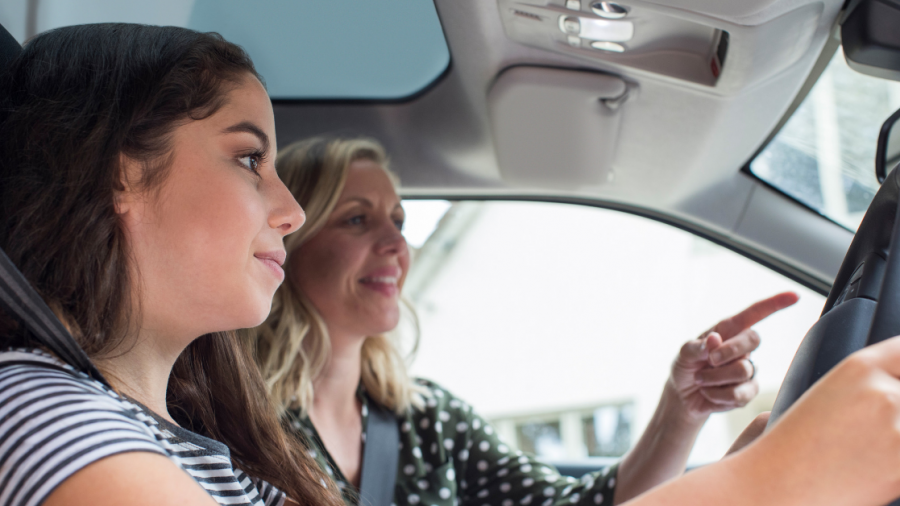Are you on your L plates and need a green slip? Are you on red P1 or green P2 plates and need a green slip? Green slips can be expensive for you or your parents. Find out the cost of a green slip for L and P platers and how to keep prices down.
What is a green slip anyway?
A green slip is compulsory third party (CTP) insurance to cover you in case someone is seriously hurt or killed in a crash involving your car. It means you don’t have to pay them out of your own pocket.
Remember, a green slip doesn’t pay for any damage to your vehicle, property or other people’s vehicles. You need comprehensive or third party property insurance for that.
Do parents pay more for L or P plate drivers who use the family car?
Yes, parents who let L or P platers use the family car do pay more for its green slip. A green slip could cost nearly $300 more in a Metro area, $260 more in Wollongong and around $200 more in other areas.
In fact, parents with a teenage L or P plater driving the family car pay the same price as this L or P plater would pay in their own car. So it’s worth sharing a car and the cost of a green slip with parents.
Extra cost of a green slip for L and P plate drivers
|
Location |
Prices with L or P drivers* |
Prices with full licence |
Extra paid for L or P drivers |
|
Metro |
$775-$791 |
$495-$778 |
$296 max |
|
Outer metro |
$570-$580 |
$382-$572 |
$198 max |
|
Newcastle/Central Coast |
$530-$540 |
$348-$532 |
$192 max |
|
Wollongong |
$685-$699 |
$438-$688 |
$261 max |
|
Country |
$537-$547 |
$349-$539 |
$198 max |
*These green slip prices are for L or P platers aged 19 who use the family car, a 10-year-old Toyota Corolla, at 1 November 2025.
[Essential]
- Research shows P-platers who share their parents’ car tend to drive more safely and communicate more about where they’re going.
- If you’re sharing the family car, parents use their details and young driver details to get a green slip quote.
[/Essential]
Do my parents have to say there is a learner or P plater?
Yes, parents have to say whether there is a learner or P plate driver. If there’s a crash, insurers must provide green slip cover even if this driver was not declared. However, insurers are entitled to ask for the premium that should have been paid and charge a penalty if the parent knowingly gave false information.
What’s the cost of a green slip if I drive my own car on L or P plates?
These are prices for a 19 year old male driver of an insured 2015 Hyundai i30 in a Metro or Country area, at 1 November 2025:
|
|
Metro 12 months (6 months) |
Country 12 months (6 months) |
|
L plater |
$775-$791 ($395-$403) |
$537-$547 ($274-$279) |
|
P plater |
$775-$791 ($395-$403) |
$537-$547 ($274-$279) |
Note, prices for the L plater or P plater are the same, even though the L plater is supervised by a fully licensed driver.
We used the green slip calculator to calculate green slip prices.
Why are green slip prices for L and P plate drivers high?
They are high because supervising a learner can be dangerous and P platers lack experience and often drive older vehicles:
- Supervising a learner driver can be dangerous and stressful. Even though there is a responsible driver, accidents can happen at this stage.
- Once learners get their P-plates, they are no longer supervised. Lack of experience can be risky to themselves and others, especially during the first month of P1s. While P1 drivers are only 2% of all drivers, they represent 20% of deaths and die at twice the rate of all drivers.
- Owning a car is expensive so many P-platers drive vehicles that are old and lack safety features.
These factors push up the price of your green slip.
How can I reduce the price of my green slip?
You can reduce the price of your green slip by changing the factors that count for pricing.
Insurers particularly use these to set prices:
- Where you live (Metro, Outer metro, Country, Wollongong, Newcastle and Central Coast)
- Type, performance and age of vehicle
- Age and gender of owner and youngest driver
- Driving history – offences, demerit points, years licensed
- Claims history – other insurance held, at-fault claims.
Parents where possible can encourage young drivers to drive a newer, safer vehicle.
Demerit points make a big difference to green slip prices. In fact, learners and P platers can easily lose their licences with a few demerit points.
|
|
Learner |
P1 |
P2 |
|
Maximum demerits |
4 in 3 years |
4 in 3 years |
7 in 3 years |
When it comes to your green slip, the best way to keep prices down is to start as you mean to go on. This is the time to build a clean driving history with no offences, demerit points, or insurance claims. It will pay in the long run.


your opinion matters: